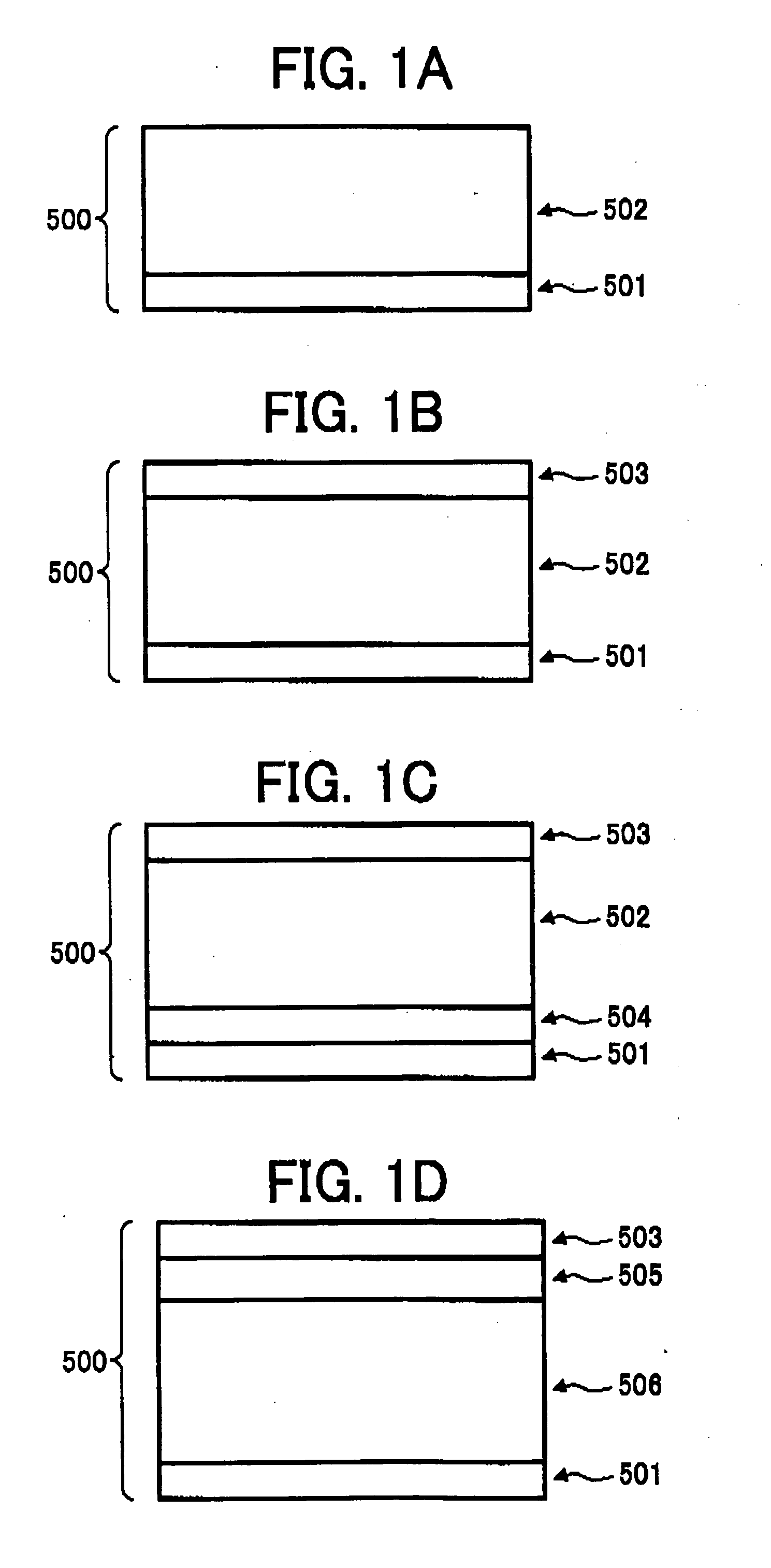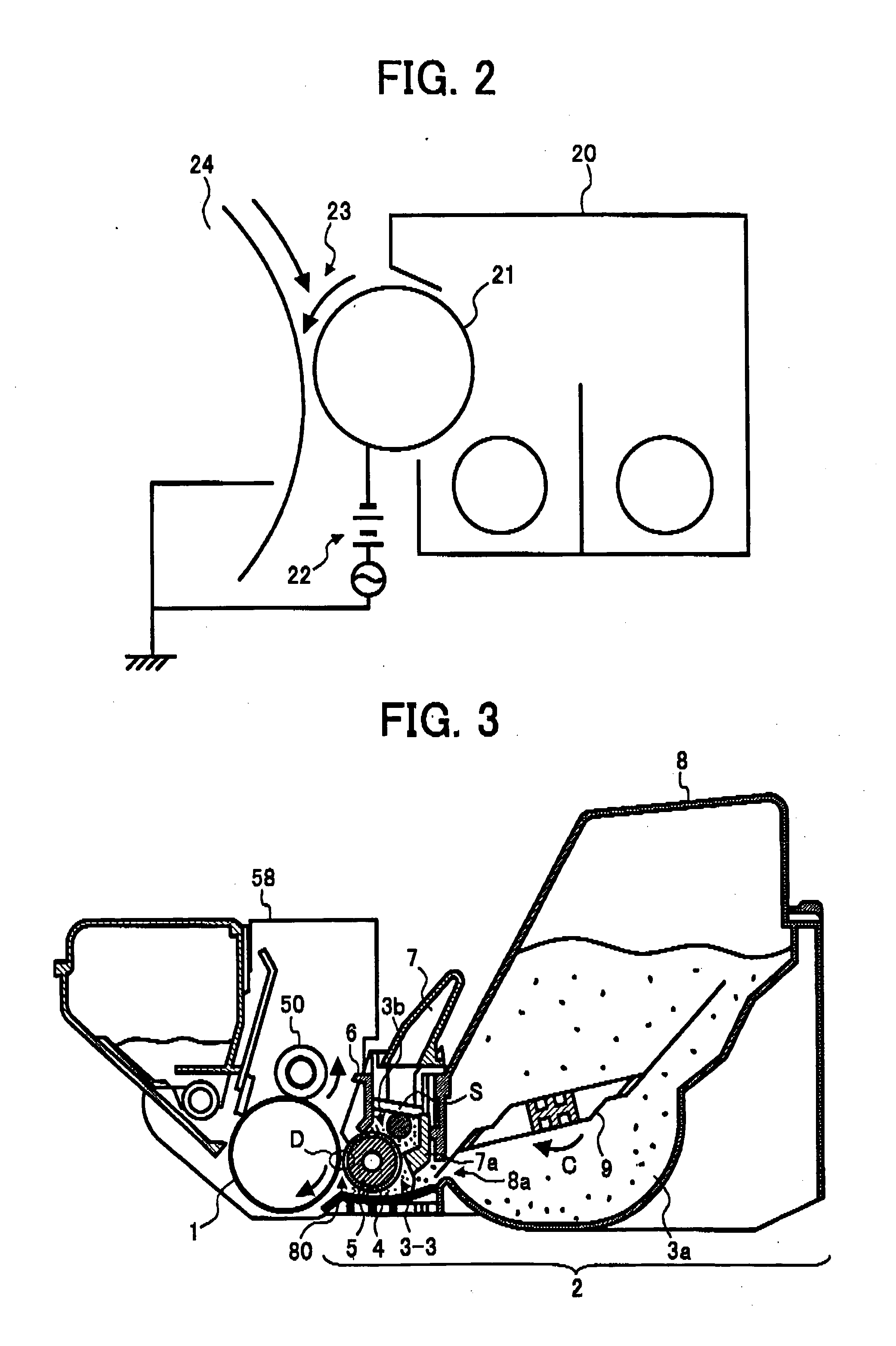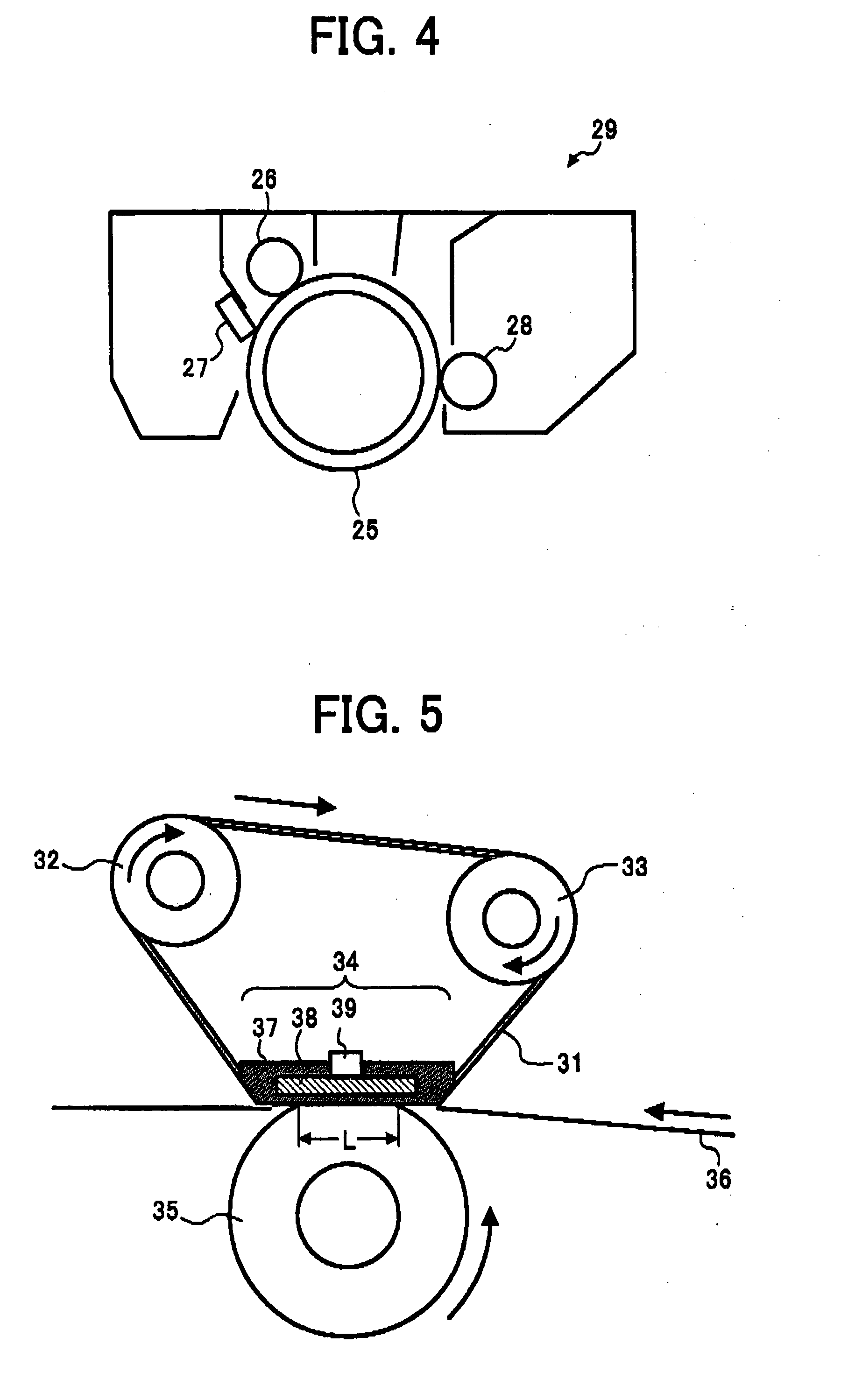Toner and developer, and image forming method and apparatus using the developer
a technology which is applied in the field of toner and developer, and image forming methods and apparatuses using the developer, can solve the problems of low fluidity of amorphous toner, deterioration of the quality of the resultant images, and inability to classify amorphous particles, etc., and achieves good fluidity, small particle diameter, and good development and transferability.
- Summary
- Abstract
- Description
- Claims
- Application Information
AI Technical Summary
Benefits of technology
Problems solved by technology
Method used
Image
Examples
example 1
Synthesis of Toner Binder Resin
[0186] 724 parts of an adduct of bisphenol A with 2 moles of ethyleneoxide, 276 parts isophthalic acid and 2 parts of dibutyltinoxide are mixed and reacted in a reactor vessel including a cooling pipe, a stirrer and a nitrogen inlet pipe for 8 hrs at normal pressure and 230° C. Further, after the mixture is depressurized to 10 to 15 mm Hg (absolute) and reacted for 5 hrs, 32 parts of phthalic acid anhydride are added thereto and reacted for 2 hrs at 160° C. Next, the mixture is reacted with 188 parts of isophoronediisocyanate in ethyl acetate for 2 hrs at 80° C. to prepare a prepolymer including isocyanate (1). Next, 67 parts of the prepolymer (1) and 14 parts of isophoronediamine are mixed for 2 hrs at 50° C. to prepare a urea-modified polyester resin (1) having a weight-average molecular weight of 64,000. Similarly, 724 parts of an adduct of bisphenol A with 2 moles of ethyleneoxide and 276 parts of terephthalic acid are polycondensed for 8 hrs at ...
example 2
Synthesis of Toner Binder Resin
[0188] Similarly to Example 1, after 334 parts of an adduct of bisphenol A with 2 moles of ethyleneoxide, 334 parts of an adduct of bisphenol A with 2 moles of propyleneoxide, 274 parts isophthalic acid and 20 parts of trimellitic acid anhydride are polycondensed, 154 parts of isophoronediisocyanate were reacted with the polycondensed material to prepare a prepolymer (2). Next, 213 parts of the prepolymer (2), 9.5 parts of isophoronediamine and 0.5 parts dibutylamine are reacted similarly to Example 1 to prepare a urea-modified polyester resin (2) having a weight-average molecular weight of 79,000. 200 parts of the urea-modified polyester (2) and 800 parts of the unmodified polyester resin (a) are dissolved and mixed in 2,000 parts of a mixed solvent formed of ethyl acetate and MEK (1 / 1) to prepare a toner binder resin (1) ethyl acetate / MEK solution. The toner binder resin (1) ethyl acetate / MEK solution is partially depressurized and dried to isolate ...
example 3
Synthesis of Toner Binder Resin
[0190] 30 parts of the urea-modified polyester resin (1) and 970 parts of the unmodified polyester resin (a) are dissolved and mixed in 2,000 parts of the mixed solvent formed of ethyl acetate and MEK (1 / 1) to prepare a toner binder resin (3) ethyl acetate / MEK solution. The toner binder resin (3) ethyl acetate / MEK solution is partially depressurized and dried to isolate the toner binder resin (3). The toner binder resin (1) has a peak molecular weight of 5,000, a glass transition temperature (Tg) of 62° C. and an acid value of 10.
Preparation of Toner
[0191] The procedure for preparation of the toner in Example 2 is repeated to prepare a toner (3) except for changing the toner binder resin (2) to the toner binder resin (3) and colorant to 8 parts of carbon black. The mother toner has a weight-average particle diameter (D4) of 6.72 μm, a number-average particle diameter (Dn) of 6.11 μm and D4 / Dn of 1.10. The other detailed conditions and evaluations r...
PUM
| Property | Measurement | Unit |
|---|---|---|
| melting viscosity | aaaaa | aaaaa |
| particle diameter | aaaaa | aaaaa |
| particle diameter | aaaaa | aaaaa |
Abstract
Description
Claims
Application Information
 Login to View More
Login to View More - R&D
- Intellectual Property
- Life Sciences
- Materials
- Tech Scout
- Unparalleled Data Quality
- Higher Quality Content
- 60% Fewer Hallucinations
Browse by: Latest US Patents, China's latest patents, Technical Efficacy Thesaurus, Application Domain, Technology Topic, Popular Technical Reports.
© 2025 PatSnap. All rights reserved.Legal|Privacy policy|Modern Slavery Act Transparency Statement|Sitemap|About US| Contact US: help@patsnap.com



